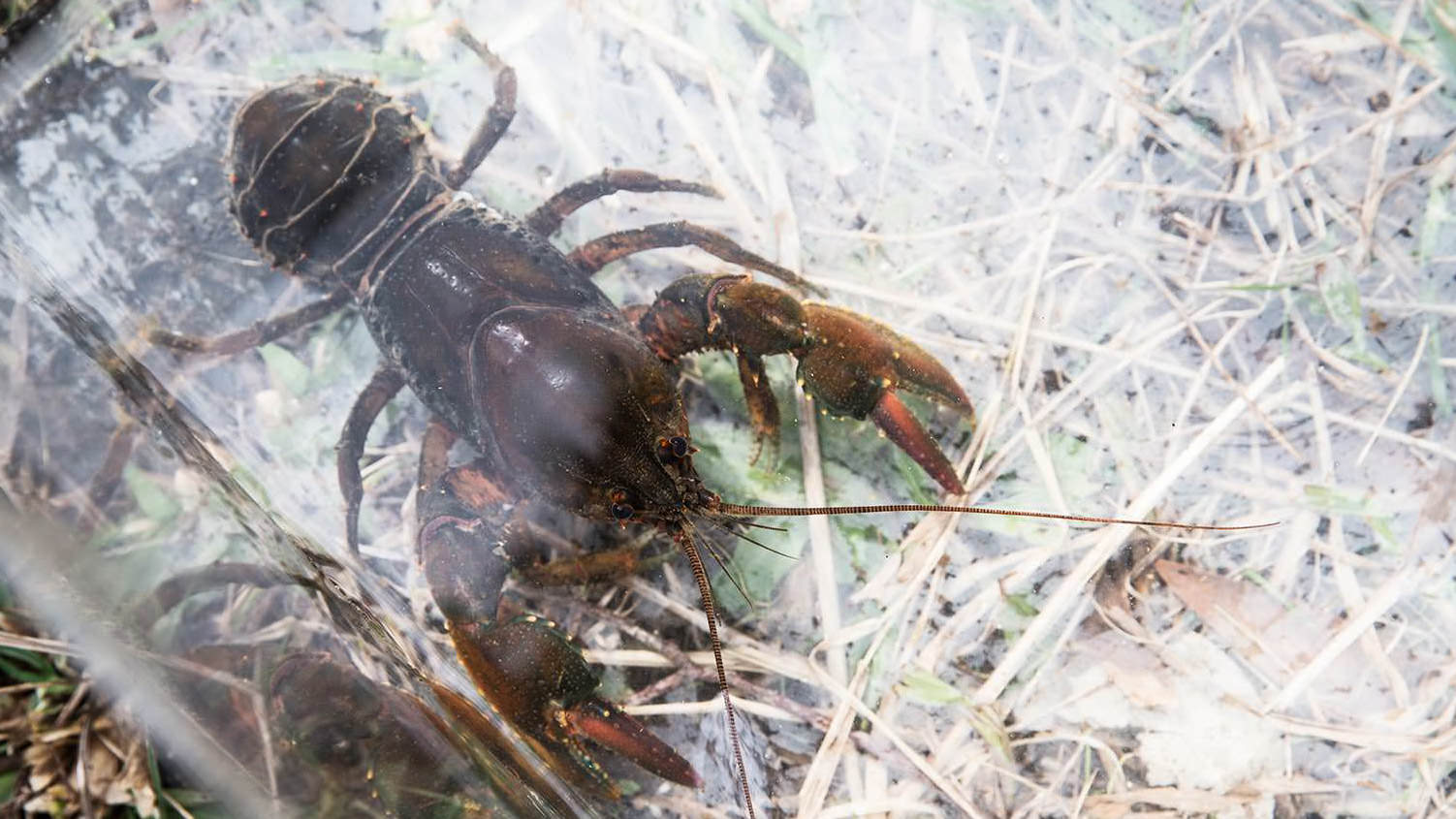[Music]
So my research is on the critically endangered Fitzroy Falls Spiny Crayfish or Euastacus dharawalus and the behavioral interactions between itself and the invasive Common Yabby or Cherax destructor. So the Fitzroy Falls region is south of the Southern Highlands area, so it's made up of agricultural land as well, as we've got Water New South Wales over here which is the utiliser of the Fitzroy Falls Reservoir.
[Music]
The critically endangered Fitzroy Falls Crayfish has low population so we're trying to find out in the field why that's happening. So what I've been doing is collecting the specimens from the field of both the endangered species and the invasive species. After I've taken ten specimens back to the lab of each species, I've been doing conducting behavioural trials on both of those species to find out what exactly is going on out in the field and how they are behaviorally interacting with each other.
[Music]
Getting to know them behaviorally has been really interesting. So the Euastacus dharawalus or the endemic species here, yeah they're extremely aggressive in their displays. So they'll usually really, if I approach them, they'll raise their calipers quite high and then start walking back. And then the Cherax destructor I would consider them like that chilled out guy at uni, just don't really care that you're there. They've even been as bold to come up to me when they're in their individual in holding tanks and actually like tap on the glass to have asked to be fed.
[Music]
The endangered Fitzroy Falls Crayfish only has about 12 kilometers of habitat which it utilizes. It's not found anywhere else. And it's recently been listed as critically endangered. Cause their habitat is so limited it's extremely important to find out why their population is declining. And one of those thoughts is that the invasive Common Yabby is causing that through competitive and behavioural interaction. So literally out competing the natives for limited resources such as food and shelter
So I got into this area because I am really passionate about conservation. Yeah, I just fell in love
with on the ground research and getting out there and making a difference. Like that's where I see myself being. Yeah, I have a special interest in aquatics and especially freshwater species as well as
marine species as well. Yeah, just think they're the most amazing creatures and we know so little about them compared to you know their land for north counterparts. So yeah, I just love to get
on the ground and learn more about them and getting people involved in such little known species is also really rewarding.
[Music]
